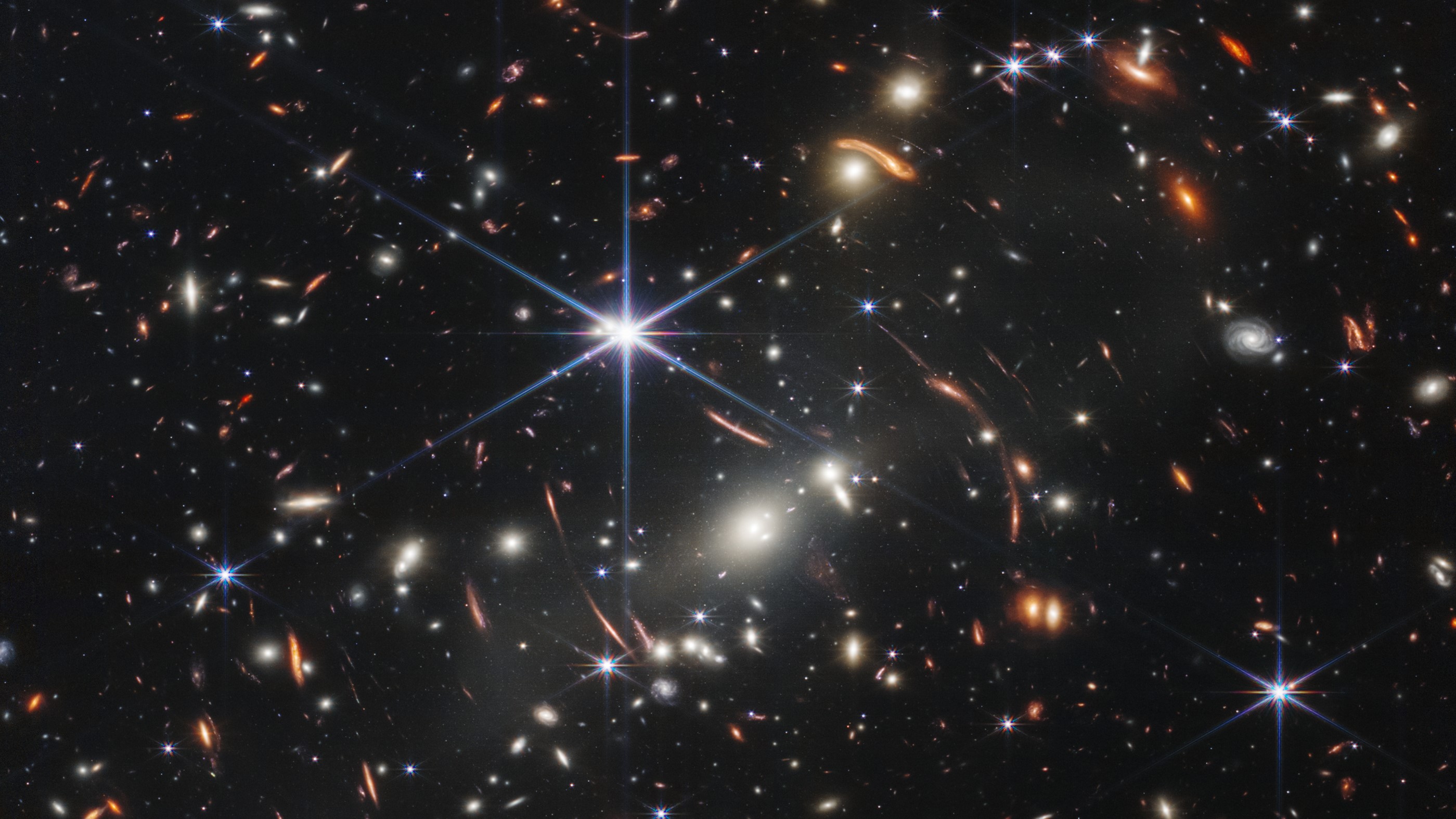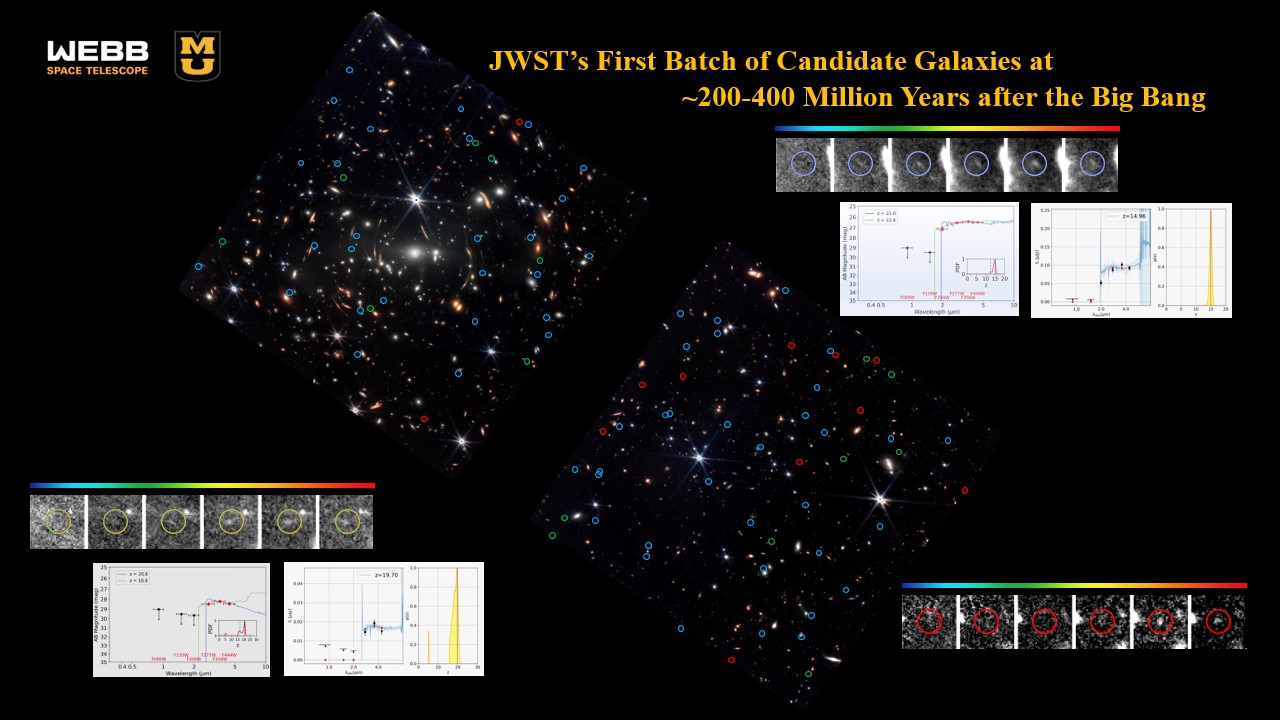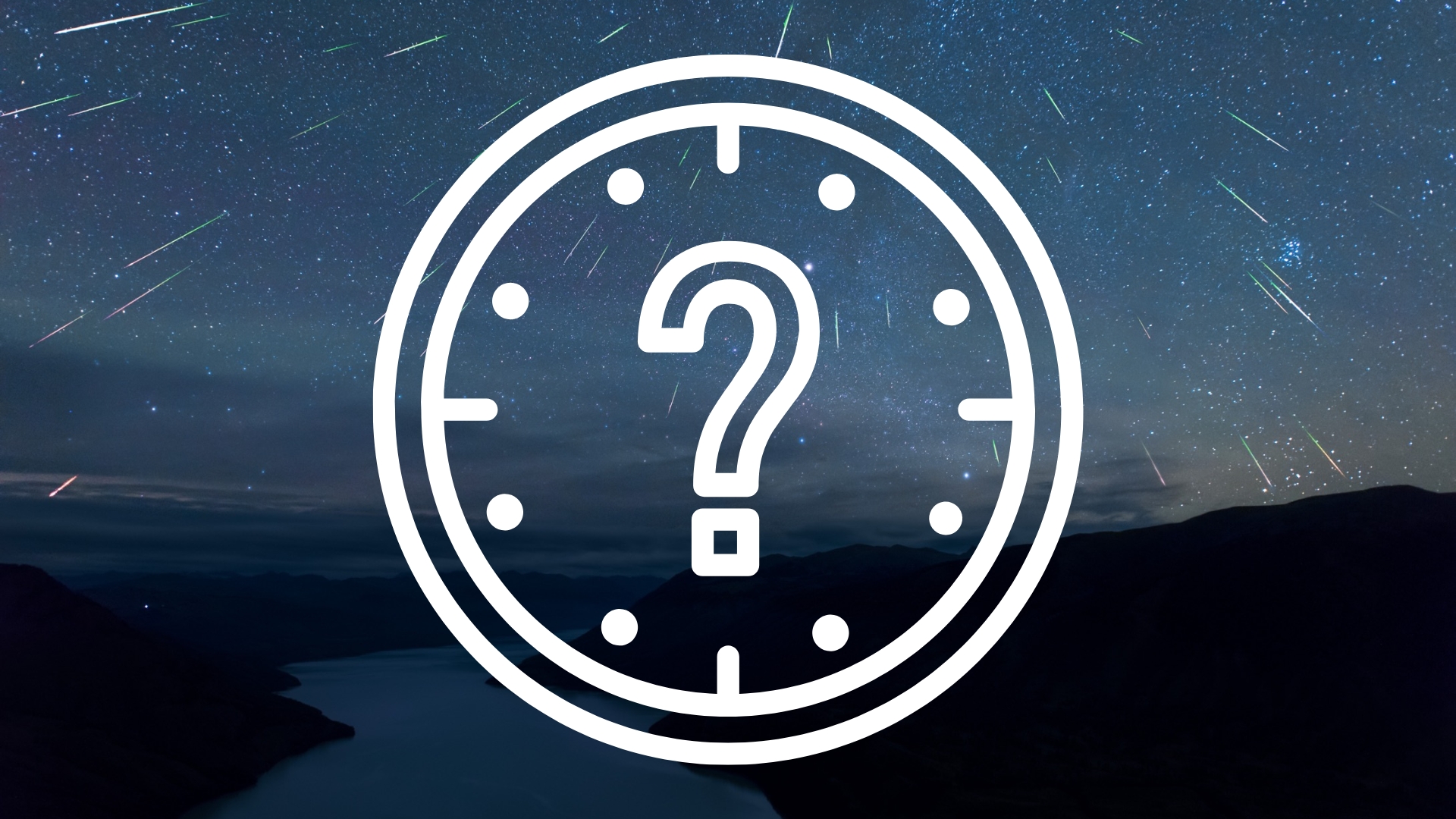The 1st galaxies may have formed much earlier than we thought, James Webb Space Telescope reveals

NASA's James Webb Space Telescope has revealed dozens of galaxies that could be among the earliest known galaxies in the universe.
Using early observations from the telescope, astronomers looked for galaxies at "very high redshifts," which would indicate that these galaxies formed earlier in the universe. The team detected 87 galaxies that may have been the first to appear in the universe, about 200 million to 400 million years after the Big Bang, according to a statement from the University of Missouri.
"Finding such a large number of galaxies in the early parts of the universe suggests that we might need to revise our previous understanding of galaxy formation," Haojing Yan, an astronomer at the University of Missouri and lead author of the study, said in the statement. "Our finding gives us the first indication that a lot of galaxies could have been formed in the universe much earlier than previously thought."
Related: James Webb Space Telescope's best images of all time (gallery)
The team looked for redshifts in the infrared light captured by Webb. This method allowed them to measure how far away the galaxies are, by looking at how the colors change in the waves of light they emit.
"If a light-emitting source is moving toward us, the light is being 'squeezed,' and that shorter wavelength is represented by blue light, or blueshift," Yan said in the statement. "But if that source [of light] is moving away from us, the light it produces is being 'stretched,' and changes to a longer wavelength that is represented by red light, or redshift.”
Since the Big Bang 13.8 billion years ago, the universe has undergone nonstop expansion, meaning the galaxies we observe outside our Milky Way galaxy are moving away from us. The higher the redshift, the farther away a galaxy is from us. And because the light from other galaxies takes a long time to reach us, the more distant a galaxy is, the earlier in time we see it as. As such, looking for galaxies at very high redshifts provides insight into the early universe.
Breaking space news, the latest updates on rocket launches, skywatching events and more!
"The speed of light is finite, so it takes time for light to travel over a distance to reach us," Yan said in the statement. "For example, when we look at the sun, we aren't looking at what it looks like in the present, but rather what it looked like some eight minutes ago. That's because that's how long it takes for the sun's radiation to reach us. So, when we are looking at galaxies which are very far away, we are looking at their images from a long time ago."
Objects at high redshifts (11 and above) can be detected only by infrared light, which is why Webb was crucial in observing these 87 galaxies. By comparison, the Hubble Space Telescope sees only from ultraviolet to near-infrared light, which is why astronomers previously thought there were very few galaxies beyond redshift 11.
"I believe this discovery is just the tip of the iceberg because the data we used only focused on a very small area of the universe," Yan said in the statement. "After this, I anticipate that other teams of astronomers will find similar results elsewhere in the vast reaches of space as [Webb] continues to provide us with a new view of the deepest parts of our universe."
The findings were published Dec. 28, 2022, in The Astrophysical Journal Letters.
Follow Samantha Mathewson @Sam_Ashley13. Follow us on Twitter @Spacedotcom and on Facebook.

Samantha Mathewson joined Space.com as an intern in the summer of 2016. She received a B.A. in Journalism and Environmental Science at the University of New Haven, in Connecticut. Previously, her work has been published in Nature World News. When not writing or reading about science, Samantha enjoys traveling to new places and taking photos! You can follow her on Twitter @Sam_Ashley13.

